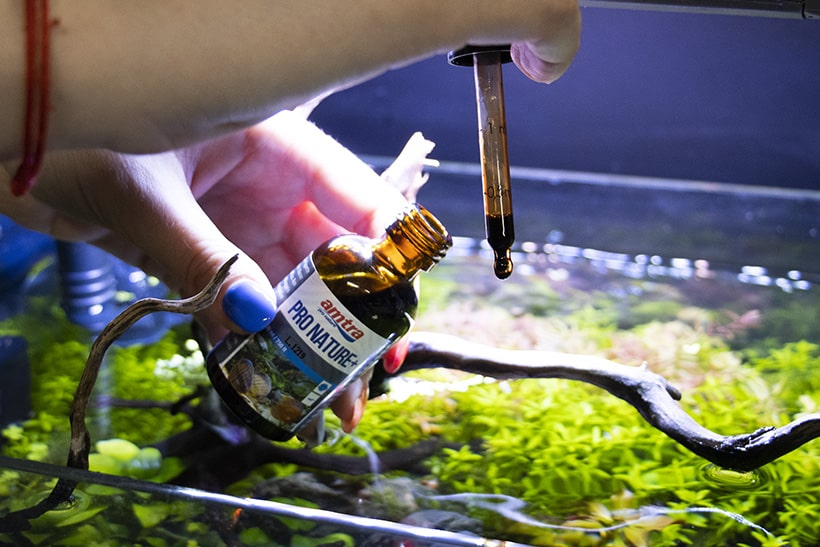“Water conditioners are useless”. How often have we ever heard or read something like that on social media or on various forums?
In order to understand how they work and why should we use these products, we need to take a step back, trying to figure out in which ways water conditioners operate and which problems can solve for us aquarium enthusiasts.
As we have already read in the article about water, this liquid solubilizes and transports a great amount of minerals and metals, enriching itself with useful substances for life. At the same time, water carries pollutants and other dangerous elements that, in some cases, can lead to intoxication and damages to aquatic organisms that come in contact with it.
This happens also to the water that arrives at our homes. This water follows the same path and it has an extremely variable composition, in accordance to its origin and to the treatments that it is subjected to in order to be drinkable.
In spite of these treatments, some minerals (that come from natural phenomena such as rocks erosion) can also be found in a good amount in our tap water. Some of them are useful to give hardness to water and to stabilize its pH, such as carbonates. Others are useful elements to the growth of plants, such as potassium and phosphorus.
If according to our use and consumption the quantity of these elements is not relevant, this does not apply to fish. Elements such as zinc can cause damages to fish, even in small amounts, accumulating into tissues and deteriorating them over time.
Moreover, during purifying processes to turn water into drinkable water, substances such as chlorine and its derivatives are used. These have diverse impacts on organisms that live into our fish tanks. Chlorine is a chemical element that is able to quickly degrade cells and for this reason it is commonly used as a disinfectant. As a consequence of this, even in low concentrations of it, it can deteriorate branchial cells, whose function is to absorb the oxygen. If the changed water contains small amounts of residual chlorine, every time that we introduce it, we face the risk of harming fishes, reducing their ability to use oxygen that exists in the fish tank. This leads to stress and consequently, reducing the fish’s resistance to pathogens, it slows down their growth and obstacles their reproduction.
How to avoid all of this?
Products such as Amtra Care contain substances that are able to neutralize heavy metals, chlorine and its derivatives, turning the tap water into a more safe water for our fishes. Our advice is to always use this product, adding it to water before pouring water into the tank. Other than binding chlorine and heavy metals, its formulation carries useful substances in order to protect mucous membranes of fish during delicate phases of tank maintenance.
However, a good water conditioner is useful not only to eliminate these substances, but also it brings into the aquarium important elements for fish’s lives.
When we change water, either tap water or osmosis water reintegrated with specific salts (Amtra KH + and Amtra GH +), we bring mineral salts useful to stabilize water pH and water hardness, other than fundamental microelements for the growth of fishes. However, we already know that the water of lakes and rivers contains much more. Tannins and humic acid, extracted from leaves, are extremely useful to protect fish mucous membranes, reducing the stress and helping them to assimilate calcium in those water that are lacking of it, encouraging fishes’ growth.
For this reason, we suggest integrating a water conditioner such as Amtra Pro Nature Plus during your water change, even in fish tanks in which osmosis water is used.
In conclusion, water conditioner is useful and in many cases it is necessary to reduce the stress derived from the delicate phases during the water change, removing dangerous substances for fish and introducing other elements that encourage fishes’ growth.
ABOUT THE AUTHOR

Lorenzo Tarocchi
Laurea Magistrale in Agriculture, Master degree in Aquaculture and Ichthiopathology
Born in 1986, Laurea Magistrale in Agriculture, Master degree in Aquaculture and Ichthiopathology. Passionate about fishing and everything that lives underwater, he began working in an Aquarium shop in 2010 and over the years in one of the major Italian ornamental fish facilities, in the meantime collaborating with the Natural History Museum of the University of Pisa and with some important companies of the sector.



